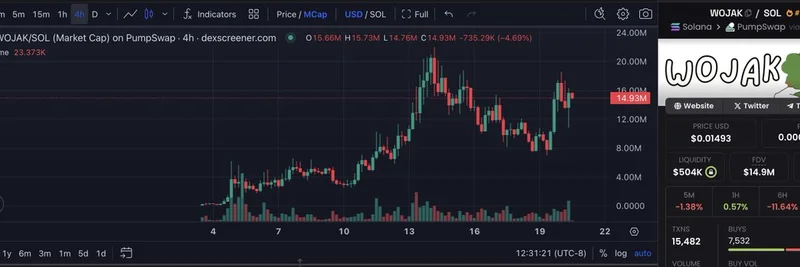In the fast-paced world of decentralized finance (DeFi), liquidity is king. But as blockchains multiply and markets splinter, keeping that liquidity flowing smoothly has become a real challenge. Enter Aave V4, the latest upgrade from one of DeFi's heavyweight protocols, promising to tackle this head-on with its clever Hub and Spoke model.
This insight comes straight from a recent clip shared by The Rollup on X, featuring Aave founder Stani Kulechov at Devconnect in Buenos Aires. In the interview, Stani breaks down how Aave V4 is set to change the game.
What is Aave, Anyway?
If you're new to DeFi or just dipping your toes into meme tokens, Aave is like a decentralized bank. It lets users lend and borrow cryptocurrencies without middlemen. Think of it as earning interest on your holdings or taking out loans using your crypto as collateral—all powered by smart contracts on blockchains like Ethereum.
Aave has been around since 2017 (originally as ETHLend) and has grown into a powerhouse with billions in total value locked (TVL). But with the explosion of layer-2 chains and specialized markets, liquidity— the ease of moving assets in and out—has gotten fragmented. That's where V4 steps in.
The Problem: Liquidity Fragmentation in DeFi
Imagine your money spread across different islands, each with its own rules and bridges. That's DeFi today. Assets get siloed in separate pools, making it hard to maximize efficiency or respond to market shifts. For meme token enthusiasts, this means higher slippage when trading volatile assets or tougher times borrowing against them during pumps.
Fragmentation leads to wasted capital, higher risks, and missed opportunities. Meme tokens, often launched on new chains for low fees, suffer the most because their liquidity pools are small and isolated.
Enter the Hub and Spoke Model
Aave V4 introduces a "Hub and Spoke" architecture to fix this. Here's the simple breakdown:
The Hub: This is the central liquidity pool on each blockchain. It holds the assets, manages accounting, and acts as the main reservoir. Think of it as the heart pumping liquidity where it's needed.
The Spokes: These are modular, customizable lending markets connected to the Hub. Each Spoke can have its own risk parameters— like collateral requirements or interest rates—tailored for specific assets or use cases.
The beauty? Liquidity stays unified in the Hub, but risks are isolated in the Spokes. As Stani puts it in the clip: "You can segregate risk while at the same time you are not segregating liquidity."
This setup means better capital efficiency. For example, a meme token trader could borrow against a high-risk asset in a dedicated Spoke without affecting the broader pool's stability. It also supports cross-chain operations more seamlessly, which is huge as meme ecosystems spread across Solana, Base, and beyond.
Why This Matters for Meme Tokens
Meme tokens thrive on hype and community, but they need robust infrastructure to scale. Aave V4's model could make it easier to integrate meme assets into DeFi. Imagine leveraged positions on your favorite dog-themed coin without draining liquidity from safer assets.
Plus, with Aave's focus on institutional adoption— as hinted in the interview title "Aave's Institutional Era"— this could bring more big money into the space, stabilizing volatile meme markets.
Looking Ahead
Aave V4 is slated for release in Q4 2025, with public testnets already live. If you're a blockchain practitioner or meme enthusiast, keep an eye on Aave's official site for updates. This upgrade isn't just technical jargon; it's a step toward making DeFi more accessible and efficient for everyone.
For the full context, check out the original X post and dive into the discussion.
Stay tuned to Meme Insider for more on how DeFi innovations like this are shaping the meme token landscape.




